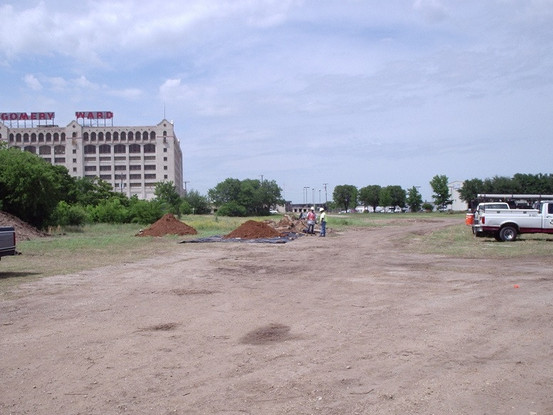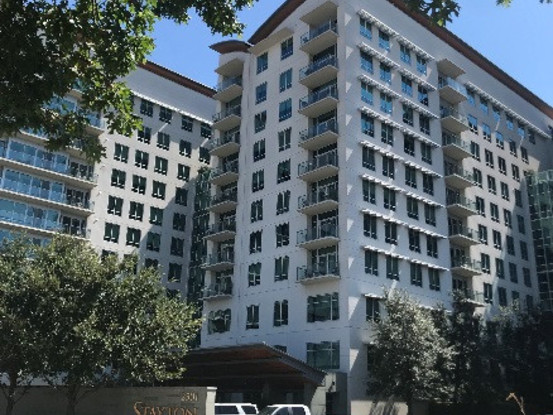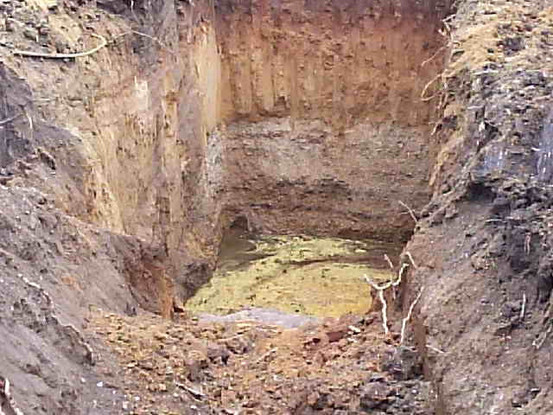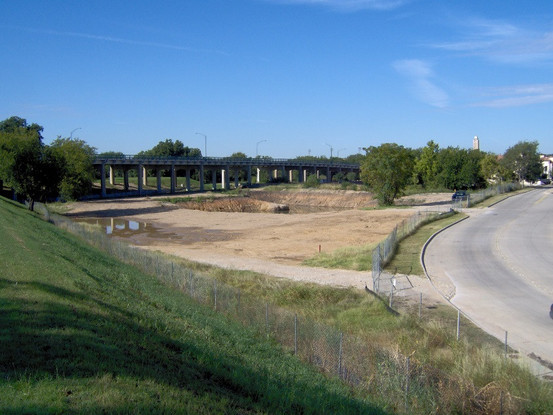This area had been occupied for decades by various commercial/ light industrial businesses and was slated for redevelopment with urban high-density housing. Initial services included environmental due diligence augmented by asbestos surveys and subsequent abatement contract management. During Phase II assessment, the presence of petroleum underground storage tanks and releases to soil and shallow groundwater were confirmed.
Following demolition of surface structures, grading was observed for evidence of additional tanks or unacceptable materials, and affected soil was segregated for characterization and disposal. One particularly large area of affected soil and phase-separated hydrocarbon was identified at the southern end of the project. This area coincided with the location planned for excavation to provide space for below-grade parking. It was decided to remove the affected soil, segregate and characterize, and dispose of it off-site as relatively lower-cost Class II waste. Competent, unweathered chalk present within 10-15 feet of the ground surface was found to have prevented deeper penetration of petroleum.
As a result of the immediate proximity of the Trinity River channel and the adjoining levee, the Corps of Engineers was contacted to secure concurrence that the excavation for both remediation and construction would not destabilize this earthen structure. Proximity to the river, in addition to the shallow competent rock, resulted in the presence of groundwater at elevations of a few to several feet above the limestone. A network of groundwater withdrawal wells was installed around the planned excavation perimeter. Additionally, precipitation and additional recharge were withdrawn directly from the excavation. Water was treated to remove phase-separated oil and subsequently discharged to an authorized and separately metered sanitary sewer.
Because local infrastructure had been removed and utilities were not slated for installation until completion of local rights of way, the project site was without electrical power. Diesel generators were utilized to power the water recovery system for the duration of the excavation of approximately 15,000 tons of soil and continued groundwater withdrawal to complete oil removal. Over the span of several months, groundwater recovery successfully removed the balance of phase-separated and high-concentration dissolved petroleum. Thereafter, the pit was allowed to refill with water and the area was secured until construction grading had commenced.




